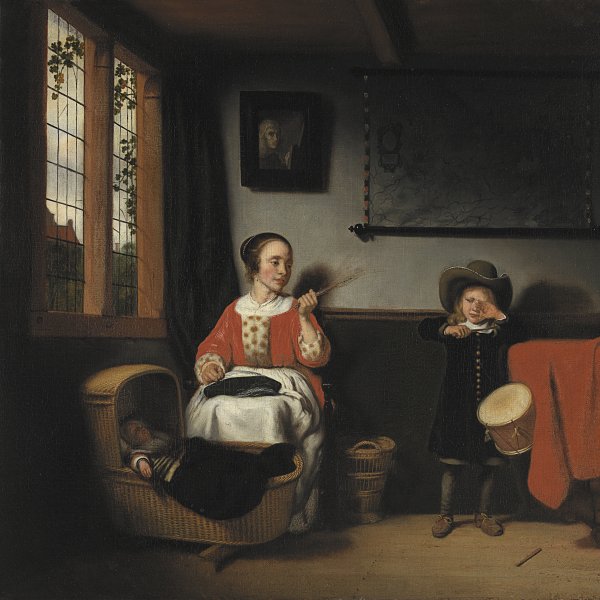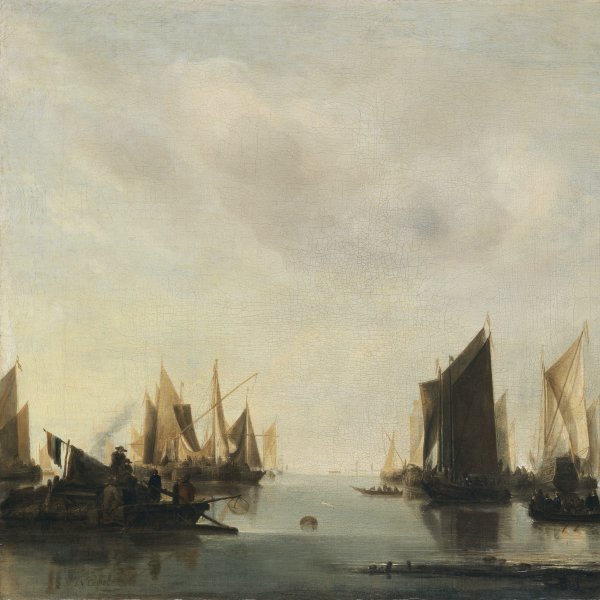Portrait of a Man with Documents
ca. 1655
Oil on canvas.
105 x 88 cm
Museo Nacional Thyssen-Bornemisza, Madrid
Inv. no.
184
(1929.10
)
ROOM 27
Level 2
Permanent Collection
In 1636 Van der Helst was living in Amsterdam, where he became the city’s most successful portraitist from the 1640s due to the patronage of Amsterdam’s wealthiest families. One of his first compositions following his move to that city was the painting of the Regents of the Walloon Orphanage, executed one year after the artist’s marriage to Anna du Pire. While his first works reveal the influence of Nicolaes Eliasz. Pickenoy, who may have been his teacher, as well as that of Rembrandt, from the 1640s Van der Helst developed an individual style that became evident in his individual and group portraits. From that period onwards his high reputation became fully established and the number of commissions that he received considerably increased.
The present canvas was dated by Ebbinge-Wubben to around the mid-1650s and includes a number of the features that made Van der Helst so celebrated. The client poses in a dark interior with a green curtain behind him. Depicted half-length and seated behind a desk, he pauses in his work, turning slightly and looking outwards. The natural manner in which he is presented reveals Van der Helst’s abilities in this regard while the approach to the subject, fine technique and characterisation, as well as the competent modelling and the elegant, dignified presentation of the model all explain the artist’s fame in his own lifetime. Van der Helst’s brushstroke became increasingly fluid over the years but he was still fully able to depict materials and textures as well as the numerous other small details that indicate the sitter’s profession. In the present work the austere presentation of the model, who is illuminated by the light falling on his face and hands, is different to the brilliant, rich colouring found in other portraits by this artist.
The sitter’s identity is not known despite the presence of the objects in the painting. Gaskell made a careful study of the still life on the table that includes documents, an inkwell and books. Particularly fine and striking are the red wax seals that hang from some of the papers, among which only the red seal of the States- General has been identified. To judge from the type of documentation and more specifically from the book that the sitter is reading, it has been suggested that he was a landowner who bought and sold land as investment. Following the painting’s acquisition for the Thyssen-Bornemisza collection it was published in the early catalogues where the sitter was described as a notary, then as a notary or merchant.
José López Rey compared this portrait to that of Josua van Belle by Murillo of 1670, drawing attention to the similarities between various paintings by the Spanish artist and works by a number of Dutch painters.
Mar Borobia
The present canvas was dated by Ebbinge-Wubben to around the mid-1650s and includes a number of the features that made Van der Helst so celebrated. The client poses in a dark interior with a green curtain behind him. Depicted half-length and seated behind a desk, he pauses in his work, turning slightly and looking outwards. The natural manner in which he is presented reveals Van der Helst’s abilities in this regard while the approach to the subject, fine technique and characterisation, as well as the competent modelling and the elegant, dignified presentation of the model all explain the artist’s fame in his own lifetime. Van der Helst’s brushstroke became increasingly fluid over the years but he was still fully able to depict materials and textures as well as the numerous other small details that indicate the sitter’s profession. In the present work the austere presentation of the model, who is illuminated by the light falling on his face and hands, is different to the brilliant, rich colouring found in other portraits by this artist.
The sitter’s identity is not known despite the presence of the objects in the painting. Gaskell made a careful study of the still life on the table that includes documents, an inkwell and books. Particularly fine and striking are the red wax seals that hang from some of the papers, among which only the red seal of the States- General has been identified. To judge from the type of documentation and more specifically from the book that the sitter is reading, it has been suggested that he was a landowner who bought and sold land as investment. Following the painting’s acquisition for the Thyssen-Bornemisza collection it was published in the early catalogues where the sitter was described as a notary, then as a notary or merchant.
José López Rey compared this portrait to that of Josua van Belle by Murillo of 1670, drawing attention to the similarities between various paintings by the Spanish artist and works by a number of Dutch painters.
Mar Borobia









